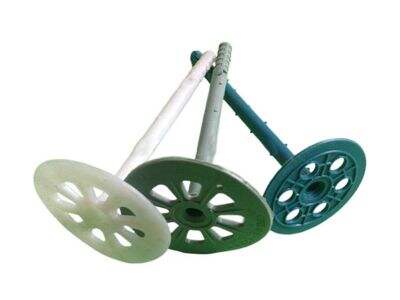Well, if you want to remain warm in cold winter months without shedding countless dollars from your electricity bill? A great way to do this is to ensure the insulation is up to snuff in the home! Insulation is a special material that helps maintain the right temperature in your house. It can also help keep your home quieter by preventing outside sounds from getting in. What, exactly, is insulation, how do you pick the right type for your home, and how do you install it correctly? Don't worry! If so, this guide will provide you with every important thing you need to know about insulation. These are some great tips to make sure that you are comfortable in your house all year long.
When It Comes to Insulation, Determine Which Type Is Right for Your Home
Before anyone begins to correct their insulation, it’s necessary to lean how better to insulate your home. Insulation can be found in a variety of materials, including batts, rolls, spray foam or blown-in insulation. There are strengths and weaknesses to each type, so you want to go for one that suits your needs. One more thing to consider is the R-value of the insulation. R-value is a number that indicates how well the anchor insulation will resist the transfer of heat into or out of the living space. The higher the R-value, the better it is at helping to keep your home warm in the winter and cool in the summer.
You also need to think about where in your house you need insulation. For instance, do you require it in the attic, the walls, or the basement? Also, consider the climate in your area. If you live in a place that gets very cold during winter, you might need insulation with a higher r-value to keep your home warm. Considering these aspects, you can select the suitable insulation for your home.
A Beginner Style Guide to Proper Installation and Maintenance
So now that you have a rough sense of the sort of insulation you should buy, it’s time to learn how to install it properly. Insulation can be difficult to handle and pose a fire hazard, so safety gear including gloves, goggles, and a mask is essential to keep you safe. You should also carefully size the area that needs insulation, to ensure you purchased adequate material. It’s also important to seal any cracks or holes in your walls before you apply the insulation board screws. The insulation won’t perform as well as it should if you don’t seal them.
When installing your insulation, make sure you are using the right tools. You’ll have a utility knife to slice the insulation, a tape measure to ensure the right dimensions, and a staple gun to hold it in place. It is essential to check the insulation regularly once it is installed. Check for signs of damage, moisture or pests, and address any issues you find immediately. This will aid in maintaining your insulation for a much longer time.
Mistakes You Should Avoid While Insulating
When fixing their insulation, people make errors. Having the wrong type of insulation to work area is one of the major mistakes. Be sure that you are using the correct R-value for every part of your home. For instance, your attic may require insulation with a higher R-value than any insulation anchors you have in your walls. Another big mistake is leaving any gaps or cracks unsealed before installing insulation. In order for this to be effective you always seal any holes.
Also, be sure to wear your safety equipment while installing. If you’re not careful it’s easily hurt. It’s also good to regularly check the insulation for damage.
Example: Creative ways to enhance productivity
Here are a few smart ways you can help your insulation do an even better job. Another idea is: double-layered insulation. That means installing two layers of insulation in a given space. Double-layered insulation can help boost the R-value and ensure that there are no gaps for heat to escape. Another good concept is utilizing an attic fan. This fan regulates the temperature in your attic, which helps keep the rest of your home comfortable.
There are also window films you can consider using. Window film is a special cover that helps (1) reduce heat loss during the winter and (2) reduce heat gain in the summer. These creative methods could contribute to a more energy-friendly home.
How to Safely and Effectively Fix Your Insulation Solutions
It is very important for us to keep you safe and to have your insulation last a long time. Make sure you are using the correct kind of insulation; just remember safety gear while putting it in. Your insulation will work properly when it is well-installed and well-maintained. Regular checking for damage or moisture is a good idea. For any damaged insulation, you must repair or replace it immediately.
For best results, always adhere to the instructions provided with your insulation materials. This will help keep your insulation effective and your home comfortable.
 EN
EN
 AR
AR
 BG
BG
 HR
HR
 CS
CS
 DA
DA
 NL
NL
 FI
FI
 FR
FR
 DE
DE
 EL
EL
 HI
HI
 IT
IT
 JA
JA
 KO
KO
 NO
NO
 PL
PL
 PT
PT
 RO
RO
 RU
RU
 ES
ES
 SV
SV
 TL
TL
 IW
IW
 ID
ID
 SR
SR
 UK
UK
 VI
VI
 HU
HU
 TH
TH
 TR
TR
 FA
FA
 MS
MS
 GA
GA
 IS
IS
 LA
LA
 MN
MN
 NE
NE
 KK
KK
 UZ
UZ



